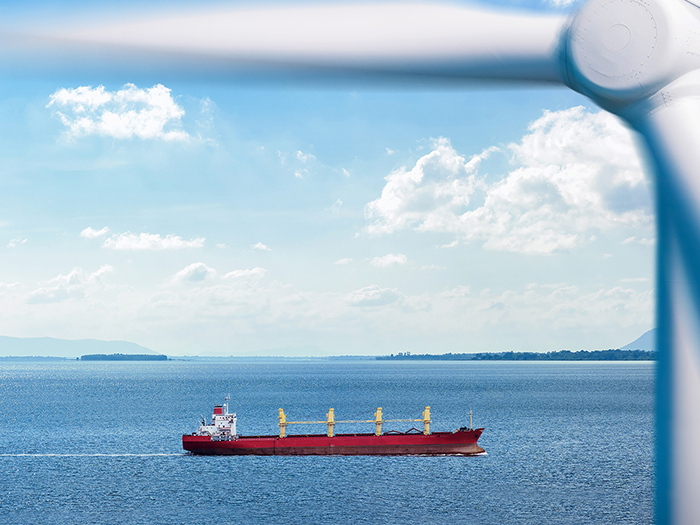
DNV GL: Fuel choice the essential decision in shipping decarbonization
Written by Nick Blenkey
The just-released fourth edition of DNV GL’s Maritime Forecast to 2050 identifies fuel choice as the essential decision facing shipping as it charts a path to decarbonization. And while there are many candidate carbon-neutral fuels, a surprising result of DNV GL’s modeling is a relatively low uptake of hydrogen as a ship’s fuel, though it will have a role as a building block in the production of several other candidate fuels.
The purpose of forecast to 2050 is to enhance the ability of shipping stakeholders, especially shipowners, to navigate the technological, regulatory and market uncertainties surrounding the path to decarbonization. It is based on a library of 30 scenarios that project future fleet composition, energy use, fuel mix, and CO2 emissions to 2050. Sixteen different fuel types and 10 fuel technology systems are modeled in the report.
“Reducing GHG emissions is rapidly becoming the defining decision-making factor for the future of the shipping industry,” says Knut Ørbeck-Nilssen, CEO of DNV GL – Maritime. “The pressure to act decisively is mounting. Perfect is the enemy of good, and so we mustn’t wait for an ideal solution to arrive and risk making no progress at all. Using a wide range of scenarios involving different fuel types and technologies, and varying degrees of regulatory pressure, our new report helps to map a way forward, offering shipowners clear insights on how to meet the challenges and opportunities ahead.”
FUEL CHOICE
The Maritime Forecast identifies the choice of fuel as the essential factor in decarbonizing shipping. The industry is at the beginning of a transition phase, with many potential options emerging. This increasingly diverse fuel environment means that engine and fuel choice now represent potential risks that could lead to a ship becoming a stranded asset. Factoring in the impacts of availability, prices and policy, on different fuels, makes the choice even more complex.
The Maritime Forecast offers a wide range of scenarios, outlining the potential risks of a particular fuel choice. To make the ramifications concrete, alongside the pathways, the Maritime Forecast includes detailed analysis of a Panamax bulk carrier newbuilding. By stress testing technology decisions under the various pathways and scenarios, the forecast presents potential performance and the carbon robustness of the various design choices.
The 30 scenarios result in widely different outcomes for the fuel mix in the fleet. In the scenarios with no decarbonization ambitions, very low sulfur fuel oil, marine gas oil and LNG dominate. While under the decarbonization pathways, in 2050 a variety of carbon-neutral fuels holds between 60% and 100% market share.
Under the decarbonization scenarios it is hard to identify clear winners among the many different fuel options. Fossil LNG gains a significant share until regulations tighten in 2030 or 2040. Bio-MGO, e-MGO, bio-LNG and e-LNG emerge as drop-in fuels for existing ships. By 2050, E-ammonia, blue ammonia and bio-methanol frequently end up with a strong share of the market and are the most promising carbon-neutral fuels in the long run.
A surprising result from the model is the relative limited uptake of hydrogen as a ship fuel, as a result of both the estimated price of the fuel and the investment costs for the engine and fuel systems. Hydrogen, however, plays an integral role as a building block in the production of several carbon-neutral fuels such as e-ammonia, blue ammonia and e-methanol, all of which gain significant uptake under the decarbonization pathways. It may also find niche applications in some vessel types, such as ferries and cruise vessels, as well as in specific regions where investments have been made in local production and distribution.
The Maritime Forecast to 2050 is part of a suite of Energy Transition Outlook (ETO) reports produced by DNV GL. The ETO has designed, expanded and refined a model of the world’s energy system encompassing demand and supply of energy globally, and the use and exchange of energy between and within ten world regions.
You can download the full Maritime Forecast to 2050 HERE.




